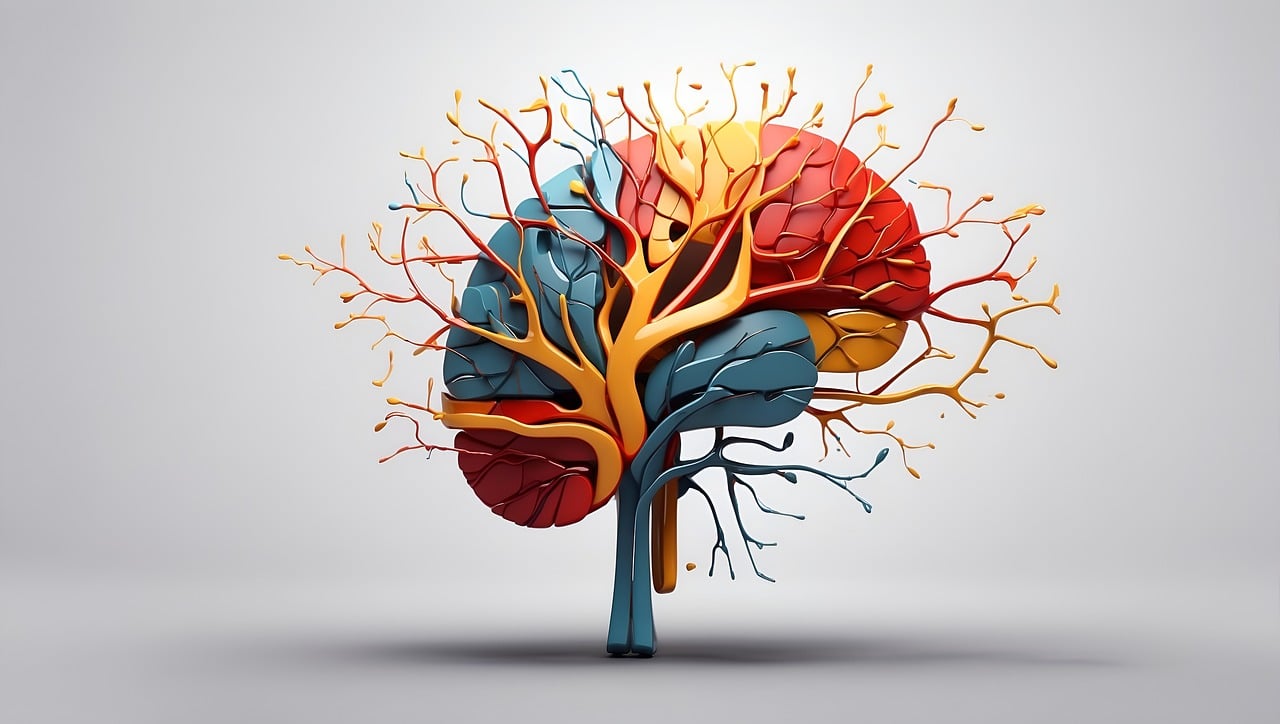The Neurobiology of Habits: Transforming Workplace Behaviors for Lasting Success

Habits shape much of what we do every day, from how we begin our mornings to how we approach work tasks. In the workplace, habits can be both powerful drivers of success and hidden barriers to progress. Understanding the neurobiology of habits—how they form, why they persist, and how they can be changed—offers businesses and leaders a unique opportunity to foster a more productive and adaptive work environment.
In this article, we’ll explore the science behind habits, how they influence workplace behavior, and strategies for transforming them to improve performance, collaboration, and innovation in the business setting.
The Neurobiology of Habits: A Primer
At the heart of habit formation lies the brain’s ability to create and reinforce patterns of behavior. Neurobiologically, habits are formed through a process known as habit loops, which involve three main components:
- Cue – A trigger or signal that initiates the habit. This could be a time of day, an emotional state, or a specific situation.
- Routine – The behavior or action that follows the cue. This is the actual habit, whether it’s checking emails first thing in the morning, grabbing a snack during a break, or conducting team meetings in a specific way.
- Reward – The positive reinforcement that strengthens the habit loop, such as the satisfaction of completing a task or a sense of relief from resolving an issue.
The brain area responsible for much of this process is the basal ganglia, which plays a central role in forming and retaining habitual behaviors. When we repeat behaviors over time, they become ingrained in the neural pathways of the brain, making them automatic and effortless.
This automatic nature of habits helps conserve cognitive resources, allowing individuals to perform routine tasks without much conscious effort. However, this can also make it difficult to break unproductive or outdated habits. To transform workplace behaviors, understanding how habits are wired into the brain can help identify effective strategies for change.
How Habits Shape Workplace Behavior
Habits are the invisible force guiding much of what happens in the workplace. They influence how employees interact with each other, approach tasks, and respond to challenges. While some habits, such as meeting deadlines or communicating effectively, contribute positively to organizational success, others—like procrastination, poor time management, or ineffective communication—can hinder progress.
Workplace habits are often deeply ingrained and can be difficult to change because they operate on an unconscious level. For example, an employee might habitually respond to stress by avoiding complex tasks, leading to decreased productivity. Similarly, a team might follow outdated procedures simply because “that’s the way we’ve always done it.”
The challenge for leaders is to identify these habits, understand their underlying mechanisms, and find ways to promote behaviors that drive growth and innovation.
The Science of Habit Change: Breaking and Building New Patterns
The neurobiology of habits suggests that once a habit is established, it can be hard to eliminate. Instead of trying to “erase” old habits, neuroscience shows that the most effective way to transform behavior is to replace an existing habit with a new one.
Here’s how businesses can leverage the science of habit change to improve workplace behaviors:
1. Identify the Cue
Understanding the cue is the first step in changing a habit. For example, if an employee has a habit of procrastinating on important tasks, leaders need to identify what triggers this behavior. Is it anxiety over the complexity of the task? Is it boredom or lack of engagement?
In a business setting, cues can often include specific events, times of day, or emotional states. For instance, some employees might avoid difficult work after lunch because their energy levels dip, or teams may follow unproductive processes simply out of routine.
By identifying the cues, leaders can gain insights into why certain habits persist and find ways to disrupt the automatic response.
2. Modify the Routine
Once the cue is identified, the next step is to modify the routine. This involves replacing the unproductive behavior with a new, more effective one. For example, if employees are in the habit of delaying difficult tasks, the routine could be replaced with breaking down large tasks into smaller, more manageable steps.
In the workplace, this might also mean changing how teams collaborate, how meetings are conducted, or how feedback is given. For example, a team that tends to hold long, unproductive meetings might benefit from adopting new meeting formats—such as setting specific time limits or using stand-up meetings to increase engagement and focus.
The key is to find a new routine that addresses the same cue but leads to a more productive outcome.
3. Reinforce the Reward
To solidify the new habit, it’s important to reinforce the reward. Our brains are wired to repeat behaviors that result in positive outcomes, so ensuring that the new routine is followed by a tangible or emotional reward is essential for long-term change.
In a business context, rewards can come in many forms, from verbal recognition to bonuses or professional growth opportunities. If an employee replaces procrastination with productive work habits, for instance, the reward might be the satisfaction of completing tasks on time, receiving positive feedback, or feeling less stressed.
When employees and teams experience the rewards of their new behaviors, these new habits become more ingrained, making the transformation sustainable.
Strategies for Transforming Workplace Habits
Changing habits in the workplace requires intentional effort and consistent reinforcement. Here are some strategies business leaders can use to help employees and teams adopt better habits for success:
1. Create a Habit-Friendly Environment
The workplace environment plays a significant role in shaping habits. Leaders can influence behavior by designing a workspace that promotes productivity and reduces distractions. For example, providing quiet spaces for focused work, encouraging regular breaks to prevent burnout, and offering tools that streamline processes can help employees form positive habits around time management and task completion.
2. Leverage Accountability
One of the most effective ways to encourage habit change is to introduce accountability. Employees are more likely to stick with new habits if they know they’ll be held accountable for their actions. This could take the form of regular check-ins with managers, peer support groups, or team-wide progress tracking.
Incorporating accountability into the workplace fosters a culture of responsibility, where employees are encouraged to stay committed to their goals.
3. Use Incremental Change
Rather than attempting to overhaul workplace habits all at once, incremental change is often more effective. Neuroscience shows that habits are more likely to stick when changes are made gradually. Leaders can encourage employees to focus on small, achievable goals, such as dedicating 30 minutes each day to a challenging project or improving communication during meetings.
Over time, these small changes build up, resulting in a more significant overall transformation in workplace behavior.
4. Provide Positive Reinforcement
As discussed earlier, rewards are essential for cementing new habits. Leaders should actively recognize and reward positive changes in workplace behavior, whether through formal incentives like promotions and bonuses or informal praise and recognition.
Positive reinforcement boosts motivation and reinforces the idea that the new behavior leads to positive outcomes, increasing the likelihood that employees will continue to adopt these new habits.
5. Lead by Example
Leaders play a crucial role in shaping the habits of their teams. When leaders consistently model the behaviors they wish to see, employees are more likely to follow suit. Whether it’s embracing open communication, staying organized, or handling stress with composure, leaders set the tone for what is expected and acceptable in the workplace.
The Impact of Habit Change on Workplace Culture
Transforming workplace habits isn’t just about improving individual performance—it also impacts the broader organizational culture. A workplace culture built around positive habits fosters an environment of innovation, collaboration, and continuous improvement.
When employees are encouraged to break free from unproductive habits and adopt new, growth-oriented behaviors, the entire organization benefits. Teams become more adaptable, creative, and resilient in the face of challenges. Moreover, a culture that values habit change leads to greater engagement, as employees feel empowered to take ownership of their personal and professional development.
Building a Habit of Success
Understanding the neurobiology of habits provides valuable insights for transforming workplace behaviors. By identifying cues, modifying routines, and reinforcing rewards, leaders can help employees break free from unproductive patterns and adopt habits that drive innovation and growth.
The process of changing habits is not always easy, but with intentional effort and consistent support, businesses can create an environment where positive behaviors thrive. By focusing on habit change, organizations can unlock greater productivity, foster a culture of resilience, and ultimately achieve lasting success.






